Amazonian Elephant's Ear Indoors

Amazonian elephant’s ear indoors with the scientific name (Alocasia x amazonica) belongs to the Araceae family, which belongs to the native regions of South Asia. The leaves of this plant are very similar to the shape of a heart, and in some cases, their length reaches 90 cm. If you have a child or pet indoors, do not expose this plant to them. Alocasia, or amazonian elephant’s ear indoors, is one of the ornamental plants that, in addition to its beautiful appearance, also has medicinal uses. For example, the root of this plant is used in traditional medicine to treat diseases and ailments.
It should be noted that this plant is also called Amazonian Baba or Amazon Alocasia. In this article, we want to acquaint you with the storage conditions of the properties of the amazonian elephant’s ear indoors or Alocasia in your home and apartment. Please read on with Aloplant.
| Jan | Feb | Mar | Apr | May | Jun | Jul | Aug | Sep | Oct | Nov | Dec | |
|---|---|---|---|---|---|---|---|---|---|---|---|---|
| Sowing | ||||||||||||
| Harvesting |
| J | F | M | A | M | J | J | A | S | O | N | D | |
|---|---|---|---|---|---|---|---|---|---|---|---|---|
| Sowing | ||||||||||||
| Harvesting |
| Botanical Name | Alocasia x amazonica |
| Common Name | Amazonian elephant’s ear |
| Plant Type | Tropical |
| Pet / Baby Safe | Toxic to humans and pets |
| Sun Exposure | Partial |
| Hardiness Zones | 9 to 11 |
| Bloom Time | Spring, summer (rarely blooms) |
| Soil Type | Moist, well-drained |
| Soil Amendments | text here |
| Types of Fertilizer | text here |
| Flower Color | Green |
| Foliage Color | deep green |
| Plant Height | 12–24 in. tall, 12–24 in. wide |
| Native Area | Asia |
Introducing the Amazonian elephant's ear indoors

The amazonian elephant’s ear is one of the most popular plants in tropical and subtropical Asia, suitable for relatively humid environments. This plant has 15 different species, and you can grow them in your living environment. It is interesting to know that naming the Amazonian elephant’s ear indoors or Alocasia is the appearance of its leaves, which are very similar to elephant ears.
The leaves of the Alocasia plant are vast, and their growth rate can vary depending on the amount of light you provide. The more light, the bigger the leaves will be. This plant has snake-like stems covered with moss.
What is the size of the leaves of the Amazonian elephant's ear indoors when growing?
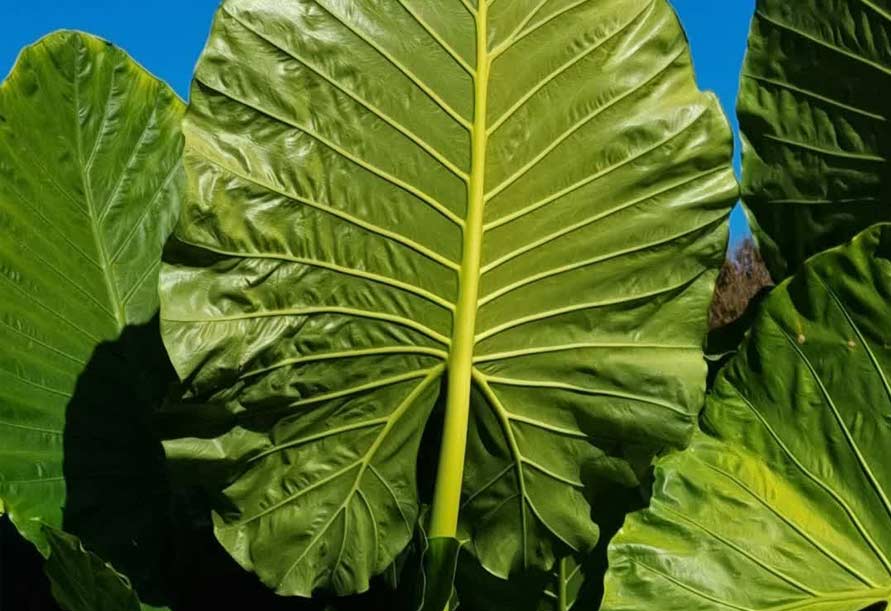
Elephant ears are usually kept outdoors but can also be a vast and impressive indoor plant. In general, the size of the leaves of this plant at the time of growth can grow up to 90 cm; Of course, the growth rate of the leaves is entirely dependent on the plant species.
The temperature required to maintain an Amazonian elephant’s ear indoors

Alocasia is a tropical and heat-loving plant that suffers from temperatures below 15.5 ° C. These plants tolerate occasional drops in temperature, but this can cause problems in the long run, and the plant may fall asleep. Some varieties of this plant die in colder weather and germinate again from the rhizome.
Humidity suitable for keeping amazonian elephant’s ear indoors
The amazonian elephant’s ear indoors loves moisture and grows well in humid environments. While dry air destroys it. One way to increase plant moisture is to place a tray full of pebbles under it and pour enough water into the pot to reach the bottom of the pot. It is recommended to keep this plant away from cold parts of the house, including windows, doors, and air conditioners.
Soil suitable for planting amazonian elephant’s ears indoors
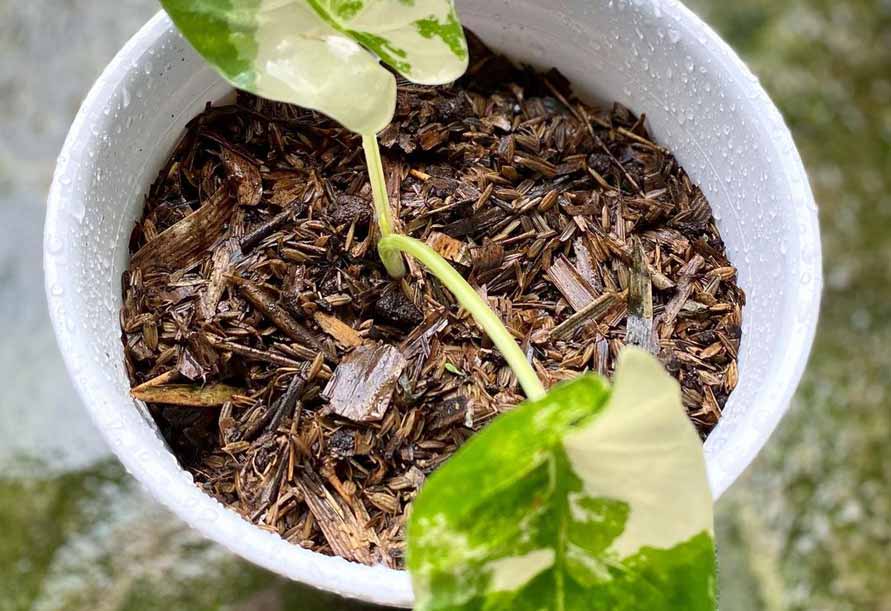
When it comes to the best ground for growing Alocasia amazonica, it will have the best yield and healthiest growth from good porous soil that drains quickly. Heavy soils tend to retain excess moisture, leading to decay problems and even plant death.
Light suitable for storing Amazonian elephant's ear indoors at home

Keeping this beautiful flower exposed to direct light would be a mistake because it causes the leaves to dry out and fall off. Although this plant is sun-loving, it indirectly likes light. You can place this flower in front of the sun for two hours a day on average on hot days of the year to meet its needs. If you use this flower at home and there is not enough light in your house, you can use growing bulbs. Use the plant as much as possible to move the pot of this plant less because it needs a stable environment and maybe shocked and destroyed by this action.
Familiarity with the famous species Amazonian elephant's ear indoors

There are about 70 different species of Alocasia, some hybrids and some hybrids. Of course, transplanted varieties of this plant are relatively more popular. Because the shape and color of their leaves are much more unique and different.
Famous species of amazonian elephant’s ear indoors include Alocasia Sandriana, Alocasia amazon, and Alocasia macrorrhiza.
Alocasia Sandriana:
This plant has very dark green leaves with a beautiful and unique appearance. This plant’s long, edged leaves have white leaf veins visible along with the leaf and its edges.
Amazon Alocasia:
This species of amazonian elephant’s ear indoors has leathery leaves and wavy edges and is arrow-shaped. The leaves of this plant are bronze and green in color and can grow up to about 60 cm.
Alocasia macrorrhiza:
The leaves of this plant are about one meter long and one meter wide and can grow up to 5 meters tall.
Reproduction methods amazonian elephant's ear indoors
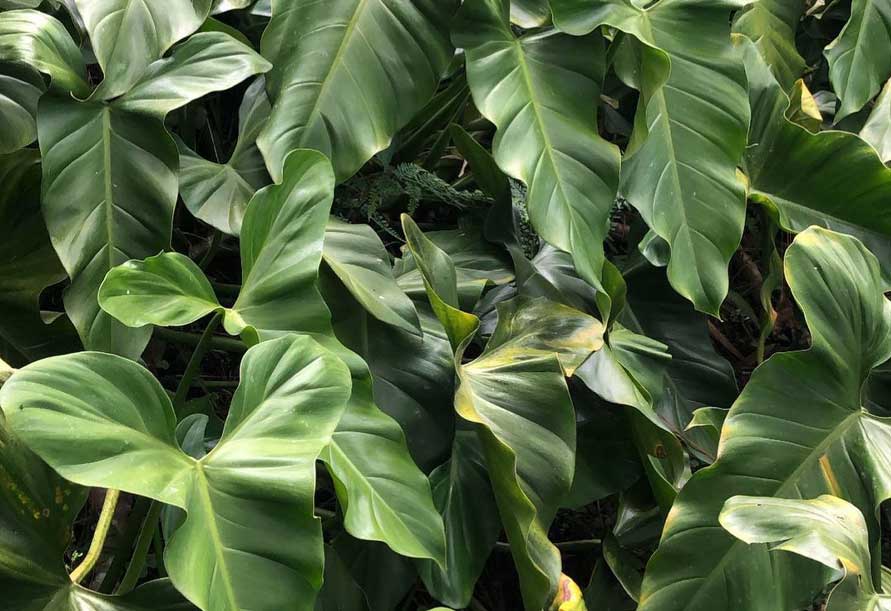
Most Alocasia can be propagated by dividing the rhizomes. You have to remove the plant from the soil and cut a piece of rhizome with the plant’s roots. It is better than this piece is not too small so that it can grow independently. Then plant the cut piece in a separate pot. Keep this new plant in a warm, humid environment as much as possible until you see the first signs of growth in the plant. Then, you can take care of it like a typical plant.
Fertilizer suitable for planting amazonian elephant's ear indoors
The amazonian elephant’s ear is a vast plant species interested in fertilizer. You can use standard liquid plant fertilizers during the growing season (spring and summer) to fertilize this plant. Give this fertilizer to your plant according to the instructions on the package or use a small amount of granular fertilizer; This fertilizer decomposes slowly and makes the plant happy during the decomposition period.
It is recommended not to use too strong a fertilizer mixture; otherwise, you can burn the foliage of the plants as a result of the accumulation of salts.
Reasons why amazonian elephant's ear indoors leaves turn brown.
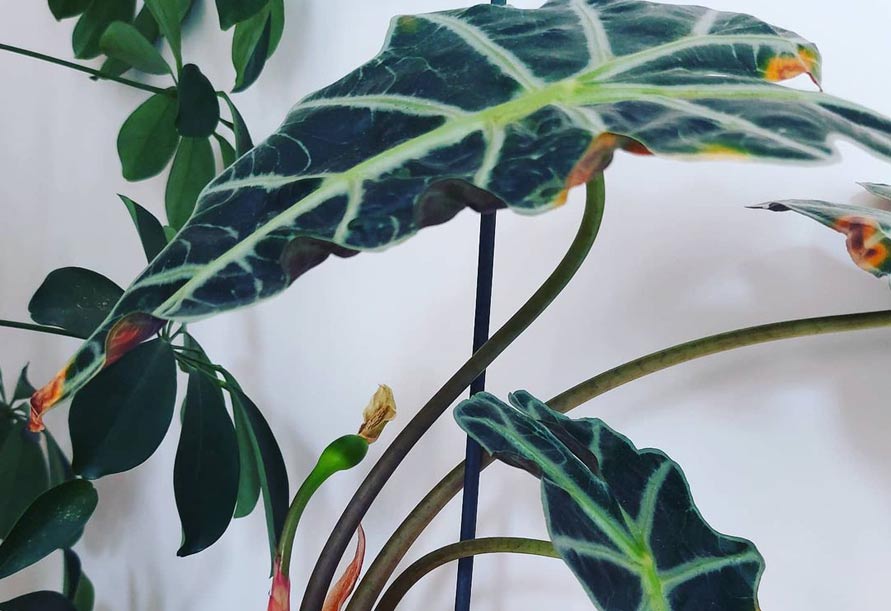
One of these two causes the edges of the leaves to turn brown in Alocasia amazonica. If the plant does not receive enough moisture, the edges will turn brown. These plants need a moist environment for the best growth. You can increase the humidity by placing the pot on a pebble tray that collects water or dusts the plant several times a week. If the plant receives the required moisture, the accumulation of fertilizer salts in the soil can cause the edges of the leaves to turn brown. Rinse the soil with a gentle stream of water about every two to three months to remove salts.
Common pests amazonian elephant's ear indoors
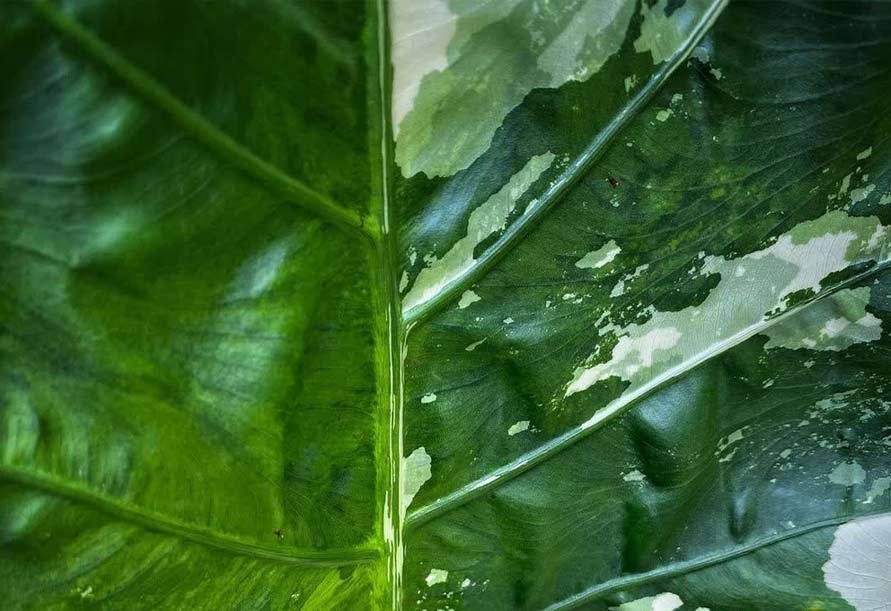
Spider mites
If your plant’s leaves get spider webs and the leaves turn yellow, it is a sign of an attack. In this case, you should immediately remove the pest plant from other plants. Remove the spider web leaves so that the disease does not spread. Wash the plant with high-pressure water. Finally, the use of acaricides can be effective.
Flour beetles
This pest has a flour-like substance on its surface which is seen as a white powder on the plant. To fight against mealybugs, soak a cotton ball and thoroughly clean the plant’s leaves.
Conclusion
amazonian elephant’s ears indoors have always been one of the most attractive options for use in homes and apartments. This species belongs mainly to tropical and subtropical regions of Asia and is a poisonous plant for pets and infants. You can breed and propagate them by knowing their maintenance systems, such as suitable ambient temperature, soil conditions, and suitable distances for irrigation. This article wanted to give you reasonably comprehensive information on maintaining the Amazonian elephant’s ear indoors. If you have any questions or concerns about this issue, please contact us in the comments section.
RELATED POSTS













